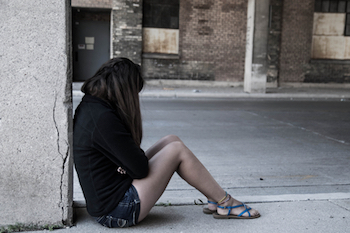 Six days ago, our community in Central Florida was rocked when a middle school student took his life. Just three months earlier, another teen in our county attempted suicide in front of his class.
Six days ago, our community in Central Florida was rocked when a middle school student took his life. Just three months earlier, another teen in our county attempted suicide in front of his class.
Unfortunately, we’re not the only ones being struck by this tragedy.
Studying Death
It’s grim work, but the Center for Disease Control tries to monitor the suicide rates in specific age brackets each year. According to their most recent data, suicide is the third-leading cause of death among 10 to 14-year olds. (Sadly, you read that correctly.) Equally heartbreaking is the fact that it’s the second-leading cause of death among 15 to 24-year olds and 25 to 34-year olds!
It’s worth noting that the CDC has also discovered that more and more teens are turning to suffocation/strangulation methods in recent years. According to the CDC’s numbers, “most suffocation attempts do end up killing the victim.” Furthermore, the CDC is now discussing and researching something parents and youth workers have acknowledged for years: when reports on certain suicide methods are discussed in the media – conventional or social – officials usually see an increase in that particular mode in the future. That connection has some wondering if social media is fueling a national epidemic of teen suicide.
What’s not up for as much debate are those adolescents who are at greater risk of suicide. According to research from the University of Southern California, kids from military families are more likely to think about, plan, and attempt suicide than kids from non-military families. 12% of young people who were “military-connected” reported a suicide attempt while 7% of “non-military-connected” young people did the same. The findings have prompted some experts to call for more screening and testing of these young people by doctors and mental health professionals.
But kids who belong to military families aren’t the only ones who are at an increased risk.
The Depression Connection
The American Academy of Child and Adolescent Psychiatry has previously highlighted the relationship between teen depression and suicide. And while they believe “depression and suicidal feelings are treatable mental disorders,” researchers at NYU’s School of Medicine fear that too many teenagers battling depression aren’t getting the care they need.
The study found that 12% of teenagers are impacted by “major depression,” while upwards of 26% of teens struggle with “mild depression.” Sadly, 36% of these teens received no treatment whatsoever within three months of the diagnosis. A whopping 68% of them didn’t have any follow-up assessments conducted and 40% of teens who were prescribed antidepressants didn’t receive follow-up care. Some doctors, like Aaron Krasne of Silver Hill Hospital, weren’t surprised to hear about the lack of treatment. “Most adolescents who are depressed do not receive any treatment whatsoever for their impairments….”
If it’s true that more than one quarter of our kids are actually wrestling with depression, the very least that we should do is learn to spot the symptoms of depression and get them the help they need. Along that vein, here are seven symptoms of depression in teens’ lives.
Taking Action
Plenty of adults from various professions and disciplines will continue to debate teen suicide stats, causes behind the problem, and even the solutions. Meanwhile, every single year, thousands of young people will forfeit their lives through this tragic reality. While no two cases and no two kids are the same, there are lots of steps parents and youth workers can take to prevent such needless loss in the lives of the teens we love. Here are two very simple ones:
- Take notice of behavior and react accordingly. You know your teens better than anyone else…or at least, you should. So, if you notice a change in attitude or behavior, take the necessary time to investigate what’s behind those shifts. One of the best ways to do this is through open, empathetic, and non-judgmental conversations. Just remember that at least half of conversing is listening. And if you do find that suicide has been contemplated – or even attempted – get them all the help you can, whether it’s relational, spiritual, mental, or a combination of some kind. Whatever you do, don’t let your teenager go unnoticed or un-helped.
- Teach teens their true worth and value. While there may not be a foolproof method of completely eliminating suicide in teens’ lives, it can’t hurt for young people to know just how significant they are to others, including God. There are plenty of scriptural references concerning our intrinsic value; Genesis 1:27, Psalm 139:13, Jeremiah 29:11, John 3:16 are just a few of the many passages that address our value and God’s desire for us. If you want some help in this department, The Source for Youth Ministry has plenty of free resources on depression and suicide (like this one and this one and this one) to help you navigate these issues from a biblical perspective. Show teens the value God ascribes to them in His Word…and the value you ascribe to them by your actions.
It may be blunt, but it’s true; suicide is a permanent solution to a temporary problem. As parents and youth workers, make sure your teens aren’t facing problems alone, and make sure they know that suicide is never the solution.
David R. Smith
David R. Smith is the author of several books including Christianity... It's Like This and speaks to parents and leaders across the U.S. David is a 15-year youth ministry veteran, now a senior pastor, who specializes in sharing the gospel, and equipping others do the same. David provides free resources to anyone who works with teenagers on his website, DavidRSmith.org David resides with his wife and son in Tampa, Florida.



